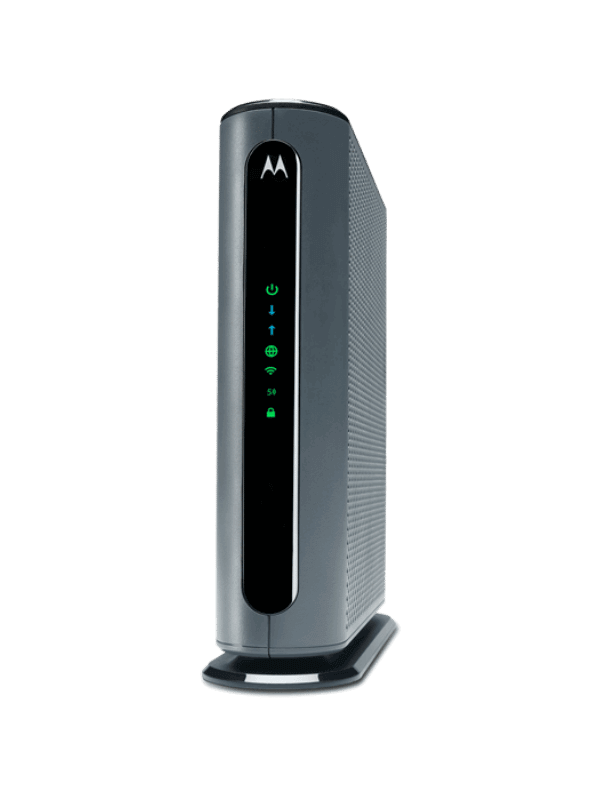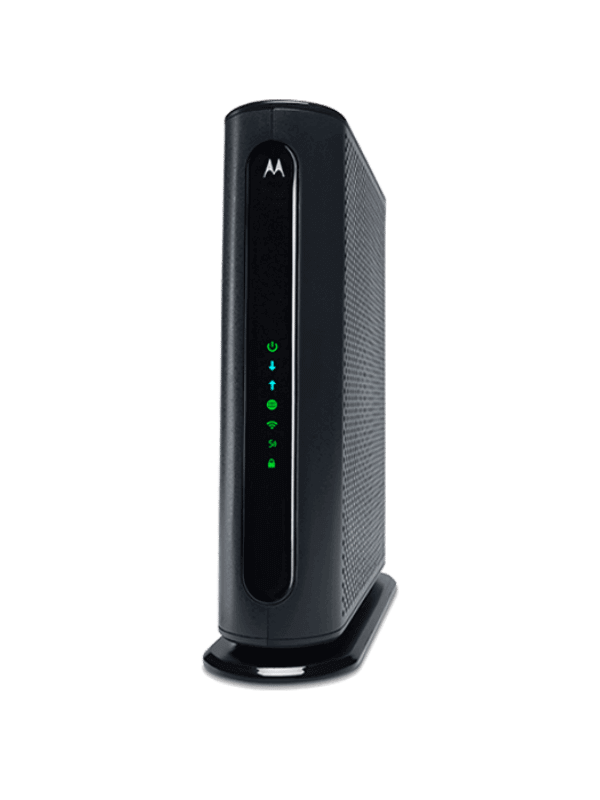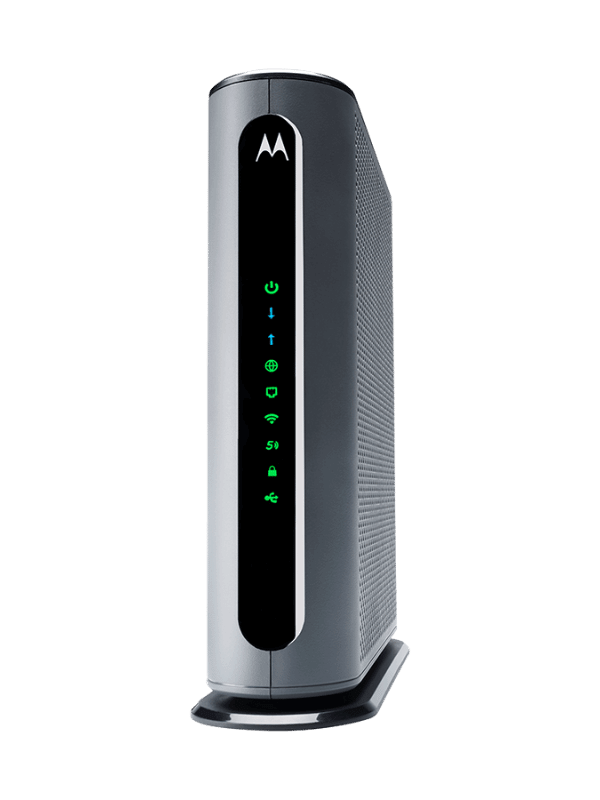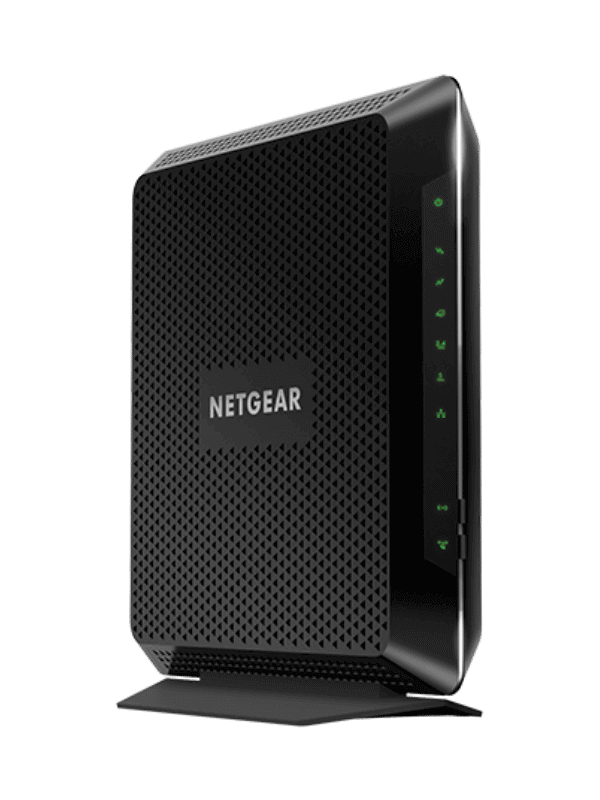Getting the right modem-router combo for your home is not always an obvious choice. There are many things to consider like speed, range, design, features, and more.
We bought and tested the Motorola MG7700 ourselves in order to bring you a truthful account of its performance, and we hope the results help you decide if it’s the right device for you.
Many ISPs have already jumped to DOCSIS 3.1. In that case, we think you should skip the MG7700 and jump straight into a DOCSIS 3.1 modem.
But if your ISP still supports DOCSIS 3.0, the MG7700 starts making a lot of sense.
A reasonable price paired with better-than-expected performance makes it an easy option for many households.
Let’s take a deeper look into the MG7700, its specs and features, and see if it could be the device you need.
Motorola MG7700 Overview

The Motorola MG7700 is a basic but capable modem-router combo (also known as a gateway).
Considering that gateways are two devices in one, a modem plus a router, the MG7700’s price seems like a great deal.
To use this gateway, you will need to subscribe to a cable internet service. According to Motorola, the MG7700 works with Comcast, Cox, Spectrum, and “most major cable ISPs”.
Again, the one thing to remember is that the MG7700 is a DOCSIS 3.0 gateway, which has slowly been replaced by the newer 3.1 protocol on major internet providers. Check out this article to learn more about DOCSIS 3.0 and 3.1.
And while we at Networks Hardware recommend having a separate modem and router for added performance and reliability, we admit the MG7700 offers incredible value.
Let’s quickly explore its detailed specifications.
Motorola MG7700 Specs
| Brand | Motorola |
| Model | MG7700 |
| Max Tested Wi-Fi Speed | 441.28 Mbps |
| Approximate Range | 80-90 feet (inside) |
| Supported ISP’s | Comcast, Cox, Spectrum, Grande, RCN, Suddenlink, Wave, WOW |
| Wireless Standard | Wi-Fi 5 |
| DOCSIS | 3.0 |
| Bands | Dual Band (2.4 GHz & 5 GHz) |
| LAN Ports | Four 1-Gigabit ports |
| USB Ports | No |
| QoS | No |
| Parental Controls | Yes, but basic |
| Guest Network | Yes |
| MU-MIMO | No |
| Beamforming | Yes |
| Dimensions | 9.0 x 8.6 x 2.6 in |
| Weight | 1.54 lb (24.7 ounces) |
You can find the full spec sheet for the Motorola MG7700 on their official website.
Now, let’s look at its performance, features, design, and more.
Performance – 4.1
For us, this is where the MG7700 shines.
Gateways are not known for high performance. And those which do usually come with a hefty price tag. Not the MG7700.
This gateway features a 24×8 DOCSIS 3.0 modem. Meaning it has 24 downstream channels capable of achieving theoretical speeds of up to 1,000 Mbps using wired Ethernet.
When switching to Wi-Fi, which is supported by the integrated dual-band Wi-Fi 5 router, we could achieve maximum speeds of 441.28 Mbps. This was at 5 feet distance using the 5 GHz band.
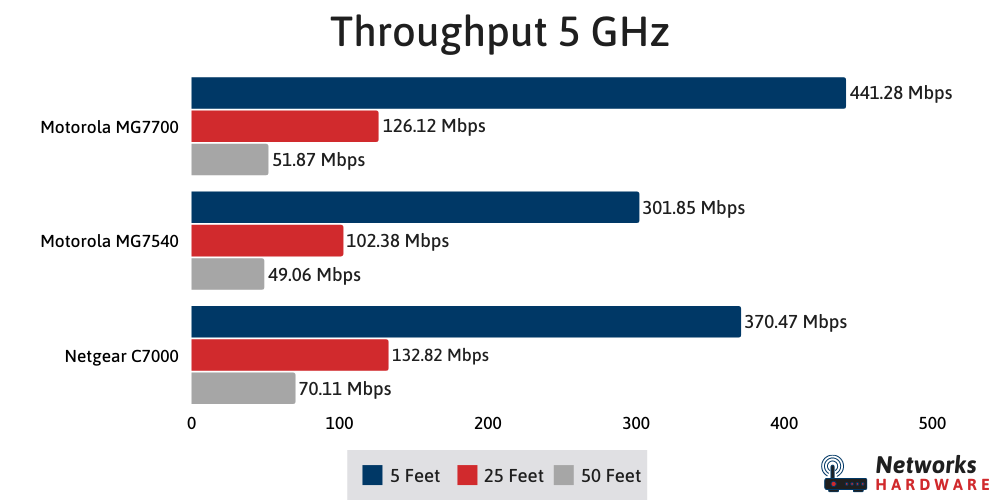
This means more than enough bandwidth to support 4K and HD streaming, gaming, downloads, and browsing for a family of 2-4.
Stepping a bit farther away at 25 feet, performance degraded significantly. In this case, we could only get around 126.12 Mbps. Quite the difference.
Because of this, we recommend the MG7700 mostly for small houses and apartments.
However, the total range (meaning how far away we could get before losing the signal completely) was not horrible at around 80 to 90 feet.
Let’s compare that with the MG7540, which only could reach about 70 feet and tops out at around 300 Mbps, but has a similar price point.
If your ISP is compatible, your internet plan is 500 Mbps or less, and you’re tight on shelf space, you will be pleased with the MG7700.
Features – 2.8
So far, the conversation has been had around nothing but compliments. The MG7700 has great performance and okay range at an incredible price.
But naturally, it can’t be perfect. Part of the reason its price is so good is that the features are very basic. Though keep in mind most gateways don’t have all the features high-end routers have, no matter their price.
For example, parental controls are included but just cover the bare minimum. You can block websites for the whole network, not specific devices. And that’s it. Hey, at least they’re there.
Surprisingly, it supports beamforming via the Anybeam feature. Meaning that the MG7700 will virtually point the signal of its three internal antennas directly where your devices are located. This significantly helps increase performance.
And that’s about it! The rest of the features are pretty standard and not really worth mentioning.
In general, the MG7700 is geared towards those with basic needs who just wish for a quick setup and reliable performance.
Design – 4.0
The MG7700 follows the design of most Motorola gateways. It looks practically identical to the lower-end MG7450 and the higher-end MG8702.
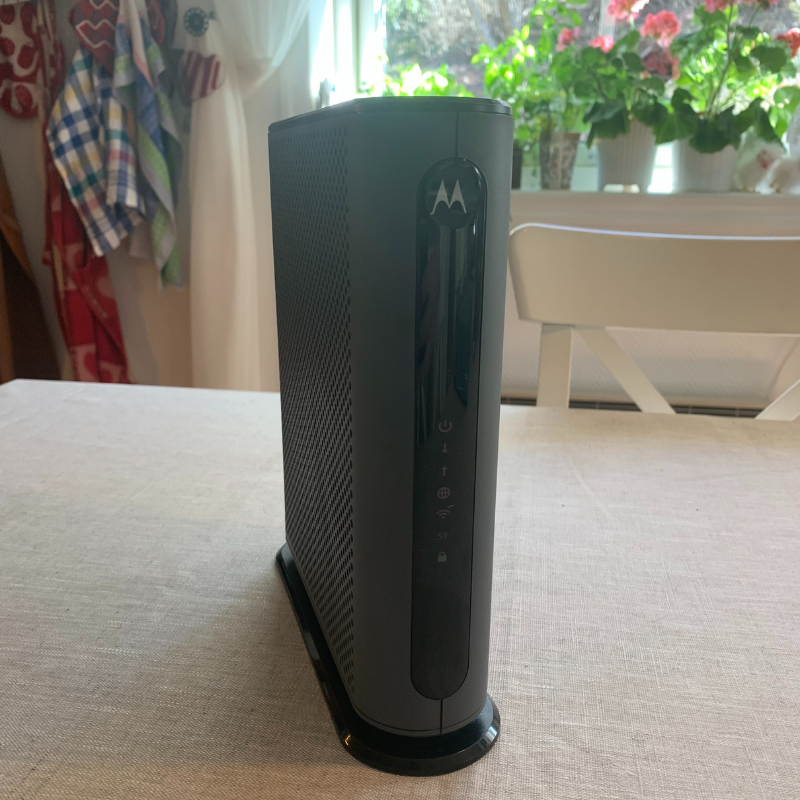
It’s a classic case of “if it ain’t broke, don’t fix it”. The looks are pretty much what you expect from a modern modem/router. No complaints there, but no compliments either.
One important thing to mention about the MG7700’s design is its vertical orientation, which will help you save significant real estate on whichever shelf you place it.
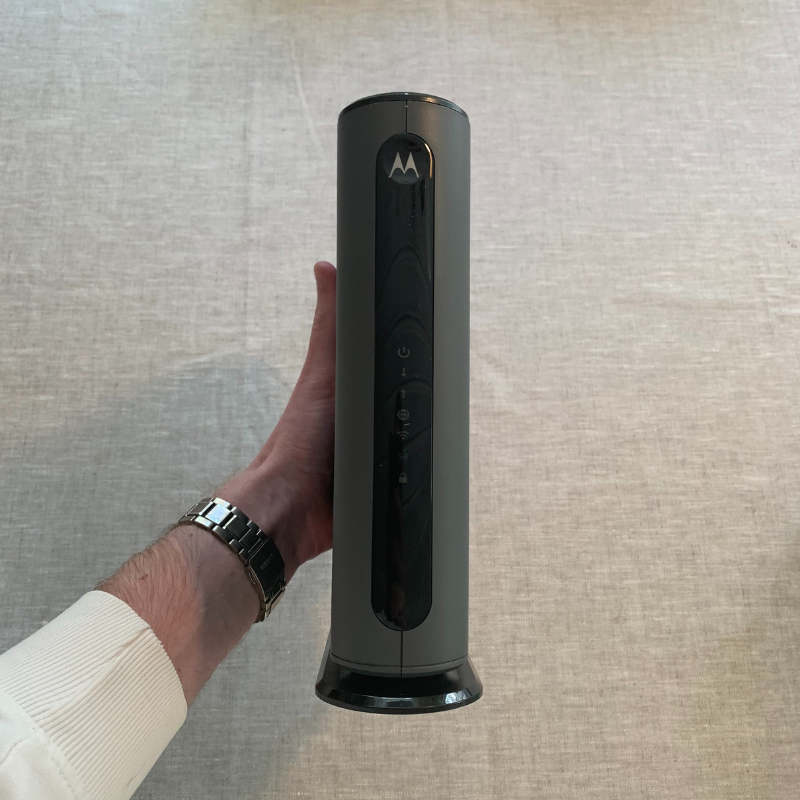
Let’s talk hardware.
The MG7700 has three antennas hidden inside its casing. It makes it look minimalist but will mean sacrificing some range. External antennas always perform better.
Turn it around, and you will find the power outlet, a coaxial cable input for your ISP’s line, and four ethernet ports that allow you to connect devices directly using an ethernet cable for more reliable performance.
That’s all you get! But, what else would you need?
For us, a USB port would’ve been nice for firmware upgrades and network storage. Still not a deal-breaker, in our opinion.
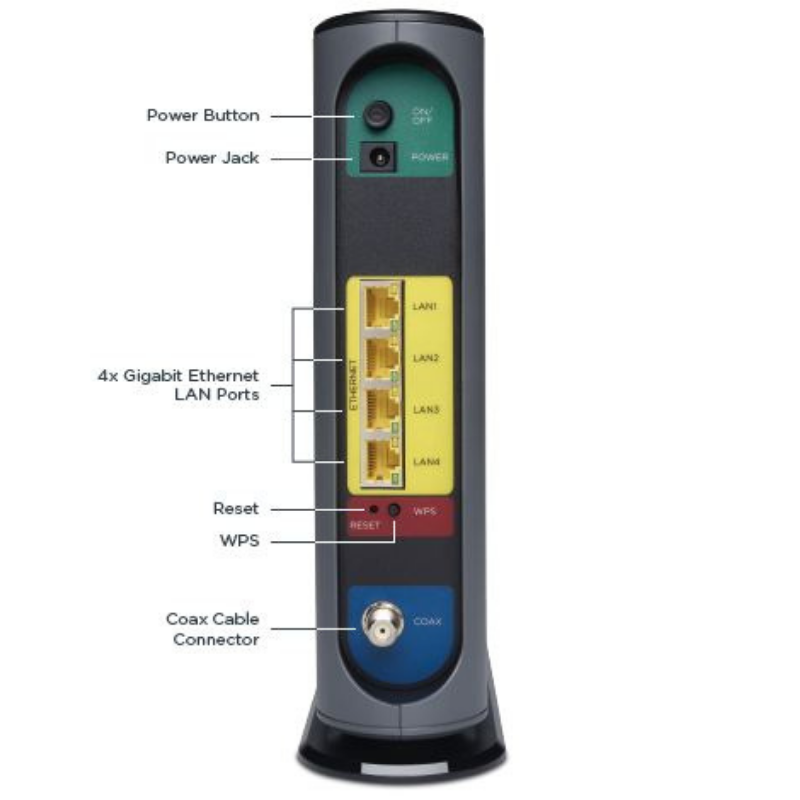
Compatibility – 3.5
Motorola lists the following ISPs as guaranteed compatible with the MG7700:
- Comcast
- Cox
- Spectrum
- RCN
- Suddenlink (careful on slow internet plans)
- Wave
- WOW
However, they claim it’s been certified and should be compatible with “all leading cable service providers”.
That’s nice and all, but we had a difficult time finding any official compatibility lists, hence our average score.
The MG7700 might still work even if your ISP is not listed above (as long as it’s a cable internet provider).
It’s always a good idea to double-check compatibility directly with your ISP before purchasing any modem or gateway.
Setup – 4.6
A well-deserved high score for the Motorola MG7700; its setup is effortless.
Check with your ISP that your cable line is active, plug in the coaxial cable and the power supply, and you’re in business.
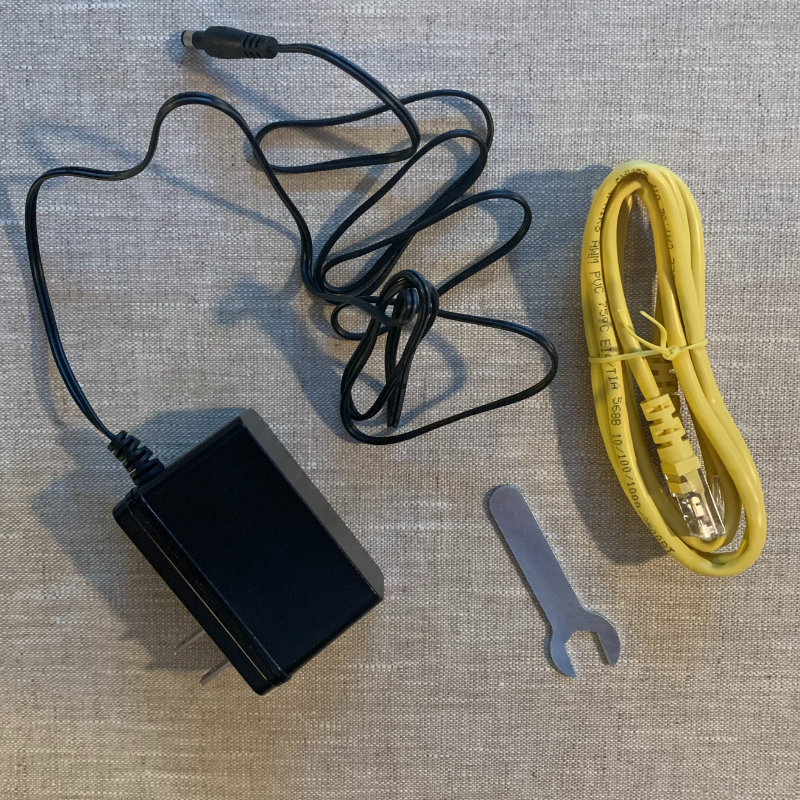
Using Motorola’s Quick Start, setup takes a couple of minutes at most.
The MG7700 even comes with a pre-set, unique Wi-Fi password for added convenience. This means you won’t have to waste time changing it. And since it’s not the default password, no one else but you will have it.
If you want to change some parameters, the Motorola configuration manager module should guide you through anything you wish to do with easy-to-follow guides.
Additionally, if you still need help, Motorola includes free expert support with techs located in the US.
Value – 4.2
Good speed, good price, good design.
We think the MG7700 is a great purchase all-around.
It includes most of the features regular users will need, great performance at 441.28 Mbps on Wi-Fi, free support, a 2-year warranty, CableLabs® certification, a smart design from a reputable brand, and both a modem and a router, all for less than the price of some mid-range routers.
But there is one important thing to note here. Again.
The MG7700 is a DOCSIS 3.0 gateway, after all. This technology can be considered on its way out, and most big ISPs have already jumped to DOCSIS 3.1.
If your ISP supports DOCSIS 3.1, the value of the MG7700 significantly declines. But if you’re bound to use a DOCSIS 3.0 modem, you can’t go wrong with this gateway.
Reviews
Customer reviews for the Motorola MG7700 are overwhelmingly positive. No surprise there after everything we’ve discussed.
Most reviewers are happy about not having rental fees anymore.
For context, owning this gateway for just 10-12 months will mean saving money compared to renting one from your ISP. Plus, since most ISP-issued devices are of low quality, performance also improves.
Another recurring theme is the easy setup, which most reviewers happily confirm is true.
It can be scary not to count on your ISP to configure a network device (they won’t help unless you’re renting it from them), but Motorola has made the process almost fool-proof.
And if you happen to run into any issues, their tech support can give you a hand.
Aside from that, many reviews confirm reliable speeds and good performance. It’s something to be expected from Motorola, but still nice to hear, considering its low price.
Alternatives
Here are some alternatives to the Motorola MG7700.

